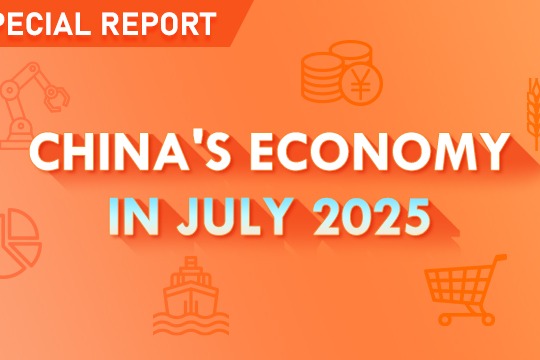Country's green drive offers lessons for urbanization globally


China's rapid advancements in sustainable urban development offer valuable lessons for other rapidly urbanizing regions, particularly Southeast Asia and Africa, and even developed countries seeking to enhance their green building practices, according to the World Resources Institute.
"One key strength lies in China's ability to implement nationwide initiatives at scale," said Roxana Slavcheva, global lead for built environment at the WRI Ross Center for Sustainable Cities, during an exclusive interview with China Daily.
Programs in China have accelerated the deployment of rooftop solar panels across residential and public buildings. This centralized planning approach — characterized by bulk procurement, standardized system designs, streamlined permissions, and State-led financing mechanisms — significantly lowers the cost and complexity of clean energy adoption, she said.
This model, according to Slavcheva, is particularly valuable for countries in Africa or Southeast Asia, where public utilities have strong influence and infrastructure investment is centrally managed.
"Countries such as Vietnam, Kenya and Indonesia could benefit from adapting China's strategy to expand access to solar energy and energy-efficient technologies at scale," she said.
According to a work plan released by the government for accelerating energy conservation and carbon reduction in the buildings sector, all new buildings in Chinese cities will fully comply with green building standards by 2025, which the World Resources Institute believes is a significant milestone in the nation's commitment to reducing carbon emissions and promoting sustainable urban development.
This achievement is the result of two decades of continuous refinement and upgrading of green building standards, with a focus on full life-cycle management, including requirements for green building materials, it said.
Cities like Shenzhen, Guangdong province, and Shanghai are at the forefront of this movement. Shenzhen began enforcing green building standards in 2022, while Shanghai implemented its own green building regulations in January 2025, requiring all new large public buildings to comply with the most climate-friendly three-star grade of the green building certification regime.
According to Slavcheva, China has also made significant strides in the development and deployment of building-integrated photovoltaics.
Beijing's green building standards, for example, mandate BIPV for new public buildings and industrial parks. Pilot projects have showcased integrated solar facades and roofing solutions developed by Chinese companies innovating in BIPV glass, solar curtain walls and roof tiles.
These Chinese BIPV products are increasingly entering global markets, including Europe, the Middle East and Southeast Asia, she said.
BIPV, which makes up a major part of China's rooftop solar power market, will have a market size of up to 40 billion yuan ($5.55 billion) this year, according to the China BIPV Association.
China aims to equip half of its new public institutional buildings with rooftop solar panels by 2025, the National Development and Reform Commission and the National Energy Administration said in a joint statement recently. They also indicated a push to expand rooftop solar installations in rural areas and industrial parks.
Zhong Baoshen, chairman of Longi Green Energy Technology Co, also emphasized the importance of scaling up the use of BIPV, saying it is a key approach alongside building-attached photovoltaics for expanding rooftop solar power generation.
This integration not only generates clean energy, but also enhances the building's design and functionality, said Zhong.
While currently costlier than rooftop solar due to their integration into the building envelope, BIPV solutions offer versatility and durability, presenting a significant opportunity for Chinese manufacturers to expand their exports as manufacturing scales and costs decrease, he said.
Looking ahead to China's 2030 carbon peaking and 2060 carbon neutrality goals, Slavcheva emphasized the need for a life-cycle approach to managing carbon emissions from buildings.
This includes focusing not only on operational energy efficiency, but also on addressing upstream emissions embedded in construction materials and the building processes, she said.
"International collaboration will play a vital role in accelerating this transformation and a two-way exchange of experience and innovation will be especially valuable," she said.
"Europe offers mature experiences in integrating energy and climate goals into urban regeneration, building codes and financing models that China can adapt to its context. Conversely, China's large-scale implementation capabilities and urbanization strategies offer valuable lessons for countries in Southeast Asia and Africa, many of which face similar urban development pressures."




































